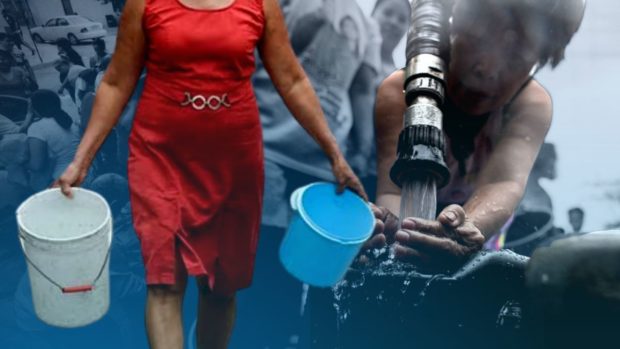MANILA, Philippines—Across the globe, two billion people currently live without access to safe water and sanitation. The impact of this ongoing water crisis and sanitation issues jeopardizes the health and safety of billions of people—especially women and girls.
Among the 17 Sustainable Development Goals (SDGs), a blueprint created by the United Nations (UN) to achieve a more sustainable future for all, is SDG 6: Clean Water and Sanitation—which focuses on ensuring universal access to drinking water, sanitation, and hygiene by 2030.
However, as of 2020, there are still two billion people without safely managed drinking water services, including 1.2 billion people lacking even a basic level of service.
READ: World Water Day: Water and sanitation in PH
SDG 6 also focuses on specific targets and indicators, including access to adequate and equitable sanitation and hygiene for all by the year 2030, which includes putting an end to open defecation in countries across the globe.
Unfortunately, data from the UN found that in 2020, only 4.2 billion people worldwide had access to safely managed sanitation services or safe toilets. Over 1.7 billion also had no access to basic sanitation services, such as private toilets or latrines.
READ: World Toilet Day: Sanitation lack puts billions of people at risk
According to the UN, the lack of access to safe water sources and adequate sanitation services usually impacts the marginalized the most, particularly the women and girls whose health and safety “are often disproportionately more at risk.”
“For women, the water crisis is personal. They are responsible for finding a resource their families need to survive—for drinking, cooking, sanitation and hygiene. They may stand in line and wait for water, walk long distances to collect water, or pay exorbitant amounts of money to secure water,” said the global nonprofit organization water.org.
“In their efforts to get water for their families, they often face an impossible choice—certain death without water or possible death due to illness from dirty water.”
Huge responsibilities
In many low-and middle-income countries, the consequences of the lack of access to clean and safely managed water, sanitation, and hygiene services (WASH) compromises the health and safety of women and girls.
According to UN and water.org, in 8 out of 10 households whose water sources are off-premises, women and girls are usually responsible for fetching water.
Data showed that women and children spend 200 million hours collecting water daily. Unicef said this translates to 8.3 million days or over 22,800 years.
“It would be as if a woman started with her empty bucket in the Stone Age and didn’t arrive home with water until 2016. Think how much the world has advanced in that time. Think how much women could have achieved in that time,” said Sanjay Wijesekera, Unicef director of programme and former global head of water, sanitation, and hygiene.
It is also estimated that women and girls spend 266 million hours daily to find a place to go due to a lack of adequately managed sanitation facilities at home.
The time spent collecting water and finding adequate and appropriate sanitation services takes many girls’ time away from school and play. These responsibilities could also lead to poor school attendance and affect many girls’ opportunities for a bright future.
Health, safety risks
Globally, women and girls are disproportionately affected by poor water, sanitation, and hygiene services and facilities.
The heavy responsibility of collecting water places women and girls at higher risk of diseases due to exposure to contaminated water.
A previous study also found that women are at increased risk of musculoskeletal disorders as a result of carrying water long-term and across long distances.
Women and girls also have specific hygiene needs, including clean, functional, secure gender-segregated spaces with access to sanitary products and disposal systems—all of which help manage menstrual hygiene and pregnancy.
However, Unicef and World Health Organization (WHO) stressed that 355 million girls in primary and secondary schools have no access to water and soap for washing their hands when changing sanitary pads or clothes.
Aside from serious health risks, the lack of safely managed water, sanitation, and hygiene services was also found to make women and girls more vulnerable to abuse and attack, which impacts their ability to study, work, and live in dignity.
“Long journeys by foot, often more than once a day, can leave women and girls vulnerable to attack and often precludes them from school or earning an income,” UN explained.
“Having to go to the toilet outside or sharing facilities with men and boys puts women and girls at increased risk of abuse and assault,” it added.
Several studies showed that inadequate sanitation facilities, lack of privacy, and inconveniently located latrines cause women and girls to experience violence, fear of harassment, and psychosocial stress.
“By failing women and girls, we risk the 2030 Agenda,” the UN emphasized.
“Access to water and sanitation are human rights. Where females are unable to enjoy those rights, their health is profoundly affected, curtailing their educational and economic opportunities, and denying them their full role in society.”
TSB
RELATED STORY: Rising water stress: Water sources dry up, flood risks rise
